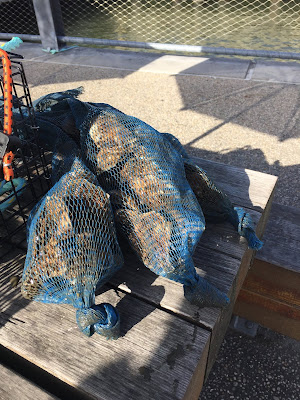We had to wait until the next science class to see if anything happened. We made some predictions about what we might see. "It may change color." "It may change shape." "It will be bigger." "It's going to be the same." Boy were we surprised that the garlic grew roots and a stem! Now to record the changes!
Lastly, in an experiment, we need to see if a garlic bulb would grow without water. There were mixed ideas about this, but the majority of the students said no, the seed wouldn't grow.
 |
| They were right! The garlic bulb without water didn't grow at all. |



































































